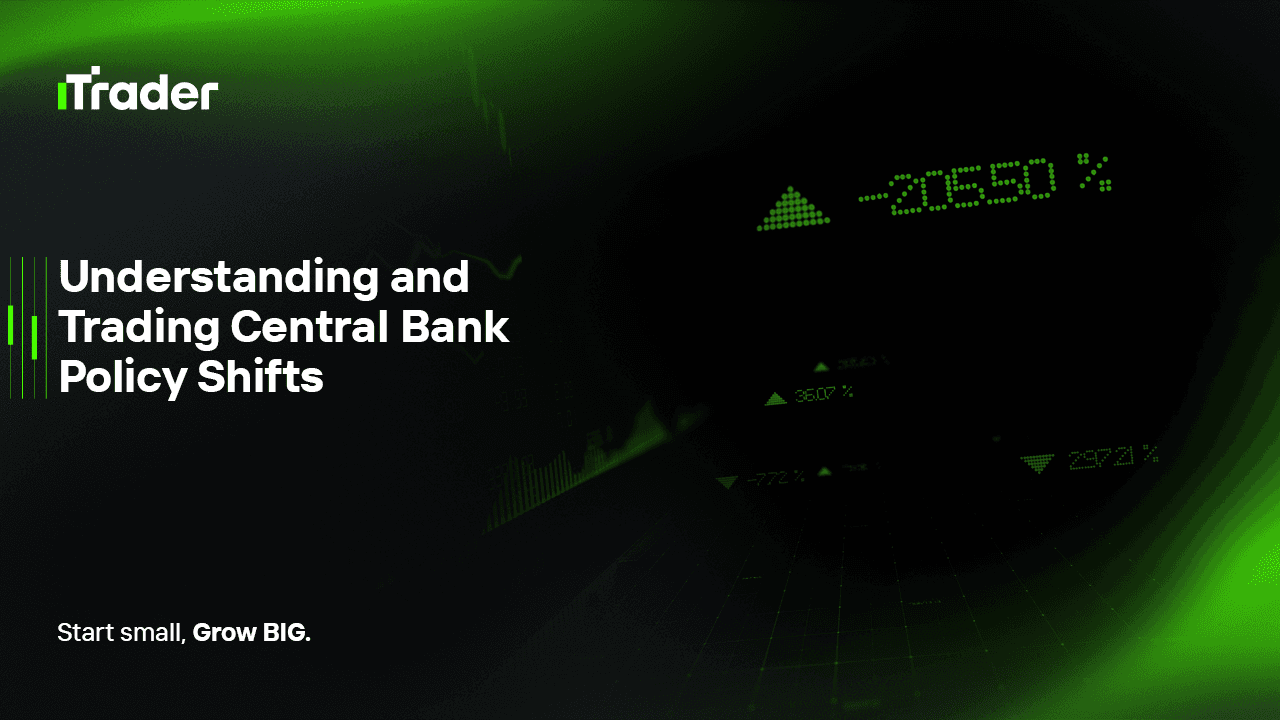2025-08-28
The forex market is one of the most sensitive arenas in global finance. Exchange rates not only respond to day-to-day technical fluctuations but also to major macroeconomic policy decisions. Among these, the most powerful drivers are monetary policy shifts by central banks.
Institutions like the U.S. Federal Reserve (Fed), European Central Bank (ECB), Bank of Japan (BOJ), and Bank of England (BoE) regularly influence global capital flows through interest rate decisions, quantitative easing (QE), balance sheet adjustments, and policy guidance. These decisions ripple across the forex market, creating both risks and opportunities.

For prop traders, understanding and anticipating central bank policy shifts is not just about catching a trade—it’s a strategic edge. Prop firm challenges measure not only short-term profitability but also how effectively traders manage risk in volatile, news-driven conditions.
Central banks operate with three main goals:
They achieve these through various policy tools:
Interest rates are the most direct channel through which central banks influence currency values.
This concept underpins the classic Interest Rate Differential strategy, where traders position based on relative yields between economies.
Markets react not only to the decision itself but also to how it aligns with prior expectations:
Central bank policy affects currencies via multiple channels:
In certain cases, central banks intervene directly, buying or selling their currency to stabilize exchange rates. The BOJ, for instance, has stepped in to curb excessive yen weakness.
When central banks follow opposite policy paths, strong forex opportunities emerge. Example: Fed tightening vs. ECB easing led to EUR/USD weakness in 2014–2015.
For prop traders, the risk around central bank events is heightened volatility. Effective practices include:
The Swiss National Bank removed its EUR/CHF floor, causing the franc to surge ~30% within minutes. Many retail and institutional traders were wiped out.
Successive Fed hikes boosted USD strength across major pairs, rewarding traders who anticipated the policy cycle.
Policy tweaks and interventions triggered strong yen volatility, creating both risks and short-term opportunities.
Since firms evaluate risk discipline, traders must:
Prop traders need to interpret not just the numbers but also the tone of central bank communication. A single phrase in a press conference can move markets. Skills include:
Central bank monetary policy is one of the dominant forces shaping forex markets. For prop traders, mastering this area provides both protection against unnecessary risk and an edge in capturing high-probability setups.
Ultimately, central bank policy sets the rules of the forex game. Traders who can read, anticipate, and adapt to these rules are far more likely to pass prop firm challenges and thrive in live market conditions.
© 2025 iTrader Global Limited|公司註冊編號:15962
iTrader Global Limited 註冊於科摩羅聯盟昂儒昂自治島穆扎穆杜 Hamchako,並受科摩羅證券委員會授權與監管。我們的牌照編號為 L15962/ITGL。
iTrader Global Limited 以「iTrader」為商業名稱經營,獲得從事外匯交易活動之授權。公司標誌、商標與網站均為 iTrader Global Limited 之專有財產。
iTrader Global Limited 的其他子公司包括:iTrader Global Pty Ltd,澳洲公司註冊編號(ACN):686 857 198。該公司是 Opheleo Holdings Pty Ltd 的授權代表(澳洲金融服務代表編號:001315037),Opheleo 持有澳洲金融服務執照(AFSL 編號:000224485),註冊地址為:Level 1, 256 Rundle St, Adelaide, SA 5000。
免責聲明:本實體並非本網站所交易金融產品之發行者,亦不對其負責。
風險提示: 差價合約(CFD)交易因槓桿效應具高度資本迅速損失風險,未必適合所有使用者。
參與基金、差價合約及其他高槓桿商品交易,需具備專業知識。
研究顯示,84.01% 的槓桿交易者最終蒙受損失。請務必充分了解相關風險,並在投入資金前確保自身已準備好承擔全部損失的可能性。
iTrader 特此聲明,對任何個人或法人因槓桿交易所導致之風險、損失或其他損害,概不承擔全部責任。
使用限制: iTrader 並不向法律、法規或政策禁止此類活動的國家或地區居民提供網站或服務。如您居住於限制使用本網站或服務之司法管轄區,您有責任自行確保遵守當地法律。